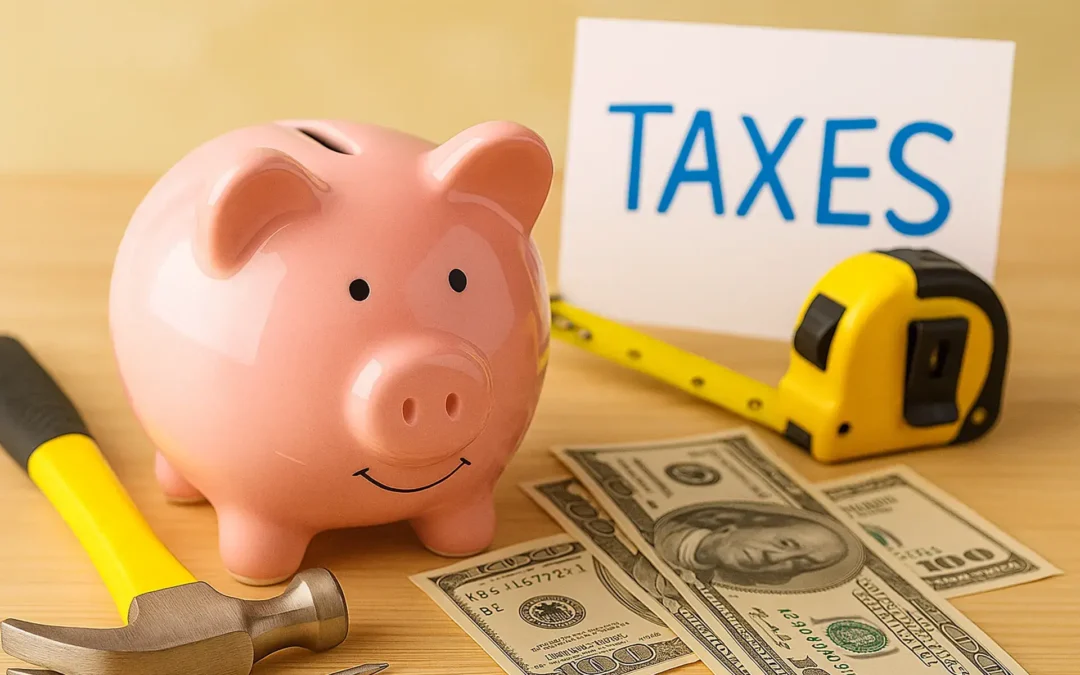Thinking about upgrading your home this year, maybe new insulation, a roof replacement, or an accessibility modification for a family member? What most homeowners don’t realize is that many of these improvements can actually save you money at tax time.
For homeowners across Long Island, Brooklyn, Queens, and The Bronx, rising repair costs and unpredictable weather make home improvements a necessary investment. At Zavza Seal, we not only help homeowners protect and improve their properties, we also want them to understand how certain upgrades may qualify for federal tax deductions, energy credits, or capital-gains reductions when it’s time to sell.
This guide breaks down the IRS-approved improvements that can reduce your tax burden, increase the value of your home, and put more money back in your pocket. We break up all of the most common tax deductible home improvements into three categories, medical home improvements, energy efficient home improvements, and capital home improvements.
Offer Easy Payment Options on Insulation Upgrades and Other Tax-Friendly Solutions!
Medical Home Improvements That Are Tax Deductible
Some medical upgrades are home improvements that are tax deductible. Medical expense deductions may be considered tax deductible if they are installed to support a medical condition or mobility need. These costs are deductible only if the improvement does not increase the value of the home. If it does increase the value, the deductible amount is reduced by the added value.
Examples of Medical Home Improvements
- Installing Entrance or Exit Ramps
- Widening Doorways or Hallways
- Installing Railings or Support Bars
- Modifying Fire Alarms and Smoke Detectors
- Lowering or Modifying Kitchen Cabinets and Appliances
- Adding Stair Lifts or Wheelchair Lifts
- Modifying Bathrooms for Accessibility
- Creating Accessible Pathways or Driveways
Energy Efficient Home Improvements That Are Tax Deductible
Energy efficient upgrades generally qualify for federal tax credits, which directly reduce your tax bill. These credits are available for certain energy saving systems and materials that meet current IRS efficiency standards.
Examples of Energy Efficient Home Improvements
- Electric Heat Pumps and Heat Pump Water Heaters
- High Efficiency Central Air Conditioners, Furnaces, and Boilers
- Insulation Such as Fiberglass, Cellulose, or Spray Foam
- Energy Efficient Exterior Windows and Doors
- Residential Clean Energy Systems Such as Solar Panels, Solar Water Heaters, Wind Turbines, Geothermal Systems, and Battery Storage
Capital Home Improvements That Are Tax Deductible
Capital home improvements increase a home’s value, extend its lifespan, or adapt it to new uses. These costs are not deducted in the year the work is done. Instead, they are added to your cost basis, which reduces the taxable gain when you sell the home.
Examples of Capital Improvements
- Installing a New Roof or Replacing Major Structural Components
- Installing a New HVAC System
- Upgrading Major Plumbing or Electrical Systems
- Adding or Expanding a Deck, Porch, or Fence
- Permanent Landscaping Such as Retaining Walls or Irrigation Systems
- Adding Storm Windows, Storm Doors, or Structural Reinforcements
- Building Additions or Converting Attics and Basements
- Installing New Siding, Brick Veneer, or Exterior Finishing Systems
Home Expenses That Are Not Deductible
Many homeowners assume every improvement qualifies for a tax break, but the IRS is very specific about what counts. The following expenses are generally not deductible for personal residences:
- Routine Repairs and Maintenance: These include painting, fixing leaks, patching drywall, or replacing basic fixtures.
- Personal Enjoyment Upgrades: Improvements made only for comfort or aesthetics do not qualify unless medically required.
- Home Insurance Premiums: Monthly or annual insurance costs cannot be deducted as home improvements.
- Utility Costs: Expenses for electricity, heating, cooling, water, or internet are not considered deductible improvements.
- Cosmetic Work Only: Projects that do not increase home value or fulfill a qualifying purpose are not eligible.
Understanding what does not qualify helps avoid filing errors and prevents confusion during tax season.
Documentation is Key: How to Prepare for Tax Season
Clear documentation is essential for a smooth tax claim. Before starting any major project, gather and keep all receipts, invoices, contracts, and canceled checks in one place. Photograph the home before and after the improvement, save product labels or manufacturer documents that verify energy efficiency, and file IRS Form 5695 when claiming energy credits. Always consult a licensed tax professional to confirm eligibility and maximize your benefits.
Our Tax Deductible Home Improvements
Some home improvements can qualify for tax deductions or credits when they are installed to support a medical need, improve energy efficiency, or provide long-term structural value. Understanding which projects may qualify helps homeowners plan smarter upgrades and reduce long-term costs.
Below are the types of improvements we perform at Zavza Seal that may offer tax advantages when completed for qualifying reasons.
- Accessibility Improvements: Accessibility improvements may qualify when the accessibility improvement is medically necessary for mobility or safety, such as installing ramps, widening pathways, or modifying bathrooms.
- Energy Efficient Insulation Improvements: Energy efficient insulation improvements may qualify for federal tax credits when the insulation upgrade meets current IRS efficiency standards.
- Crawl Space Encapsulation Improvements: Crawl space encapsulation improvements may qualify when the encapsulation is performed to address documented medical sensitivities to mold or moisture and may also count as a capital improvement that reduces taxable gains at the time of sale.
- Basement and Foundation Waterproofing Improvements: Basement and foundation waterproofing improvements may qualify when the waterproofing work is medically necessary to address mold-related health concerns and typically count as capital improvements that extend the home’s lifespan.
- Mold Remediation and Moisture Control Improvements: Mold remediation and moisture control improvements may qualify when performed due to a documented medical condition and may also be treated as capital improvements when combined with structural repairs.
- Exterior Drainage System Improvements: Exterior drainage system improvements may qualify as capital improvements because the drainage upgrade protects the home from water damage and provides long-term structural value.
- Retaining Wall Improvements: Retaining wall improvements may qualify as capital improvements because the retaining wall installation stabilizes soil, prevents erosion, and enhances the property’s long-term structural integrity.
Home Improvements That Are Tax Deductible: Final Thoughts
Tax deductible improvements, energy efficient upgrades, and capital improvements offer homeowners three major opportunities to save money and reduce tax burdens. Understanding how each category works helps you plan projects that protect your home, improve its value, and support your financial goals.
For the most accurate guidance, always review the latest IRS publications and speak with a tax professional before filing. If you found this guide helpful, consider sharing it with other homeowners who want to make smarter decisions about their improvements and tax planning.
Protect Your Home And Maximize Your Tax Savings With Zavza Seal Today!








